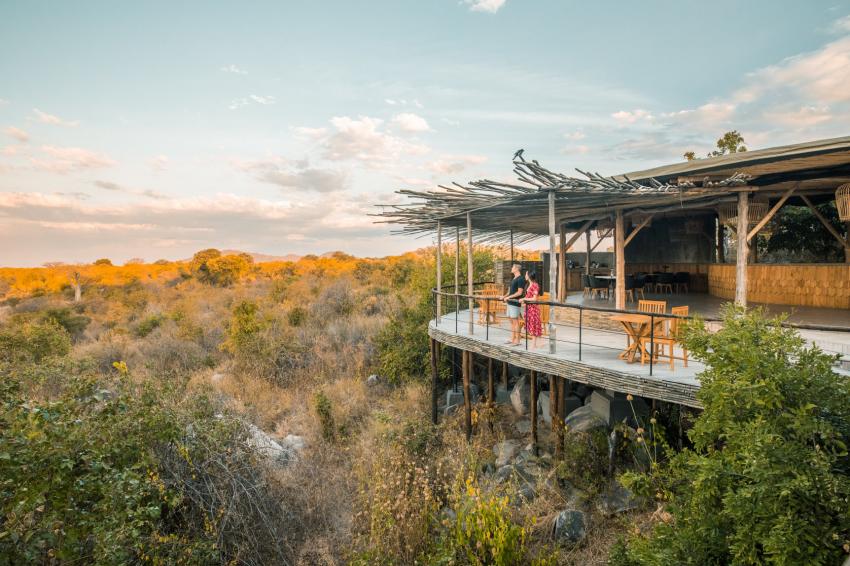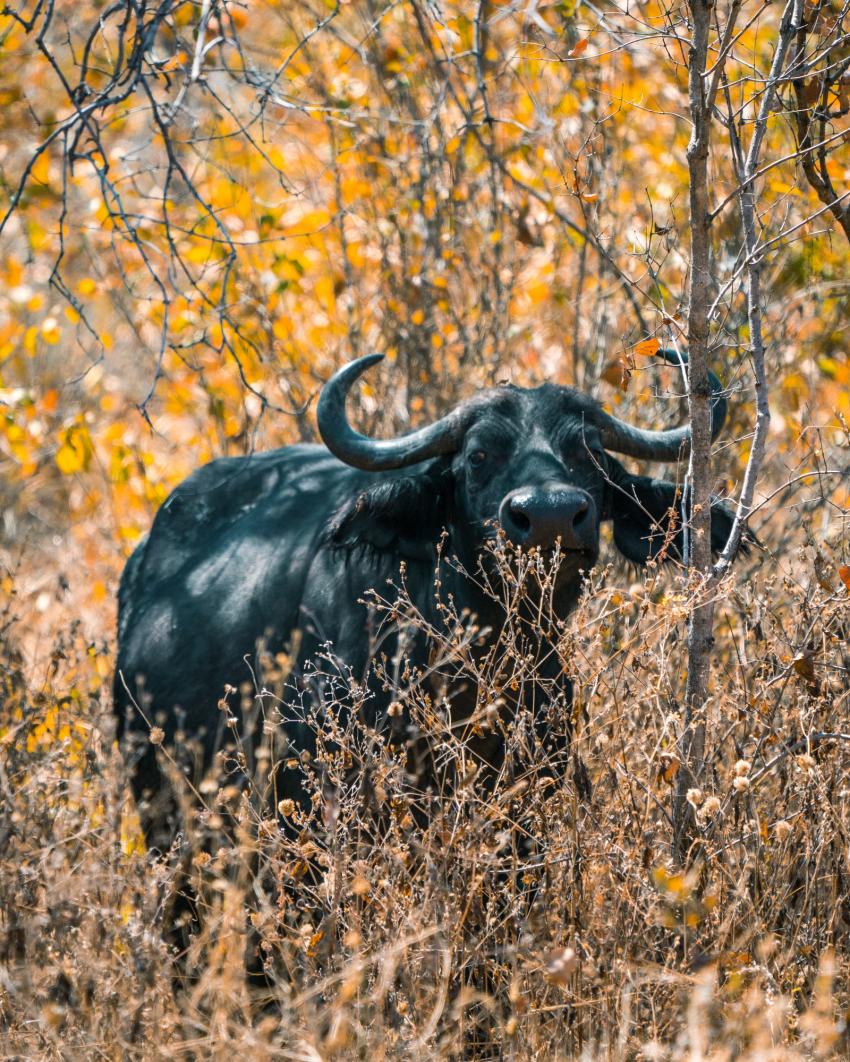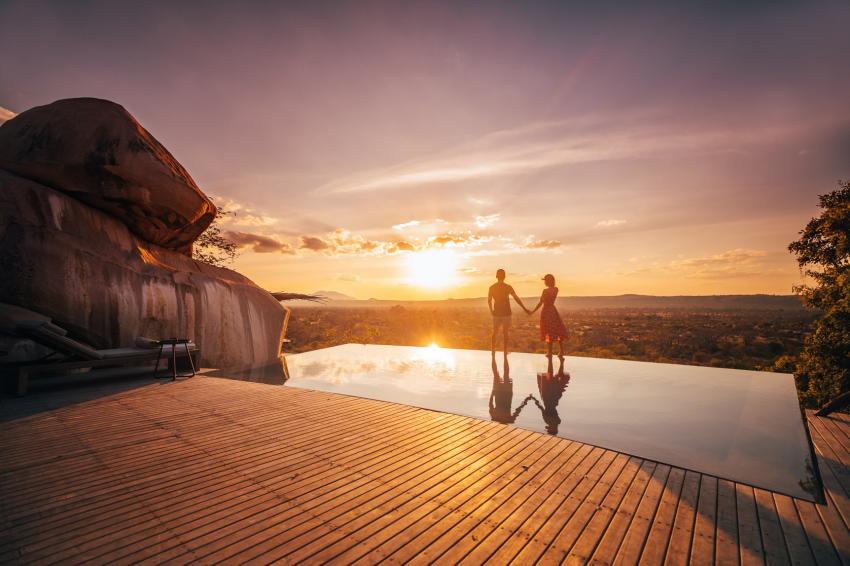The largest national park in Tanzania, Ruaha sprawls across more than 20,000 square kilometres in the very heart of the country. It forms part of the extensive Rungwa-Kizigo-Muhesi ecosystem and is named after the Great Ruaha River that flows along its southeastern edge. Its fascinating landscapes and remote settings make Ruaha one of Tanzania’s hidden gems and an ideal destination for visitors wanting to escape the crowds of the Northern Circuit.

Ruaha National Park was established as the Saba Game Reserve in 1910 under German control before its name was changed to the Rungwa Game Reserve in 1946 when the British took over. It wasn’t until 1964 that part of the reserve was gazetted as the Ruaha National Park and later expanded to include the Usanga Game Reserve and its bird-filled wetlands. The name “Ruaha” comes from the Hehe word “Ruvaha”, which translates as “river” and refers to the life-source and major wildlife viewing hub in the national park.
Ruaha National Park is renowned for its high diversity of plant and animal life while also supporting human communities and agricultural activities on the lower reaches of the Great Ruaha River. During the dry season, animals congregate on the river banks to refuel, with few other natural water sources in the park. The river’s cascades provide an important habitat for crocodiles and hippopotamus to wallow while elephants use their feet and trunks to access water along seemingly dry sand river beds.
Due to its remote setting, Ruaha gets far fewer visitors than the Selous Game Reserve (which is also on the Southern Circuit) and just a fraction of those that visit the big-name parks and reserves in the north of Tanzania. But those that do venture here are rewarded with spectacular escarpments and baobab-studded hills, which provide a backdrop to some superb wildlife viewing experiences.

Dense concentrations of predators and large elephant populations are just some of the highlights, not to mention the convergence of species from Southern and Eastern Africa. Lion viewing around the Mwagusi area is particularly rewarding, as is the birdwatching during the lush, rainy season.

While Ruaha often gets overlooked due to its relative inaccessibility, a new flight from the Serengeti is set to change all that. It’s an affordable destination for those who want to get off-the-beaten-track while discovering one of Tanzania’s most exciting national parks.
What animals can you see in Ruaha National Park?
Ruaha National Park boasts all the large predators that excite safari visitors, including healthy populations of lions, leopards and cheetahs. Wild dogs, hippopotamus and hyenas also inhabit the park, as do large herds of buffalos, giraffes and sable antelope. Ruaha is also believed to have one of the largest concentrations of elephants in all of East Africa. But one of the real appeals of wildlife spotting here is the combination of species from both East and Southern Africa, including Grant’s gazelle, greater and lesser kudus, zebra, impala and waterbuck.

Ruaha National Park is also an outstanding birdwatching destination, with more than 570 species recorded. The Usanga Basin has been recognised as an Important Birding Area by Birdlife International, with migratory species from Europe, Asia, Australia and Madagascar all flocking here during the rainy season. Keep your eyes peeled for endemic Ruaha red-billed hornbills and giant kingfishers, as well as spur-winged geese and bateleur.
Daytime game drives are the main way of exploring Ruaha National Park, with most operators heading out during the early morning and late afternoon hours when the wildlife is at its most active. Night safaris are not permitted in the park and walking safaris are only operated by some camps and lodges due to the large numbers of elephants present. Another unforgettable way to experience Ruaha is on a fly camping trip where you’ll be treated to a bush dinner and a night spent out under the stars with the calls of the wild ringing around you.
How to get to Ruaha National Park
Ruaha National Park is around 10 hours’ drive from Dar es Salaam, with the Julius Nyerere International Airport the main gateway for most travellers. The journey is mostly on dusty and bumpy roads, with many safari operators including a stop at Mikumi National Park to break up the journey. From Mikumi, it’s another 320 kilometres to Ruaha National Park or roughly five hours by vehicle.

Many travellers opt to board a scheduled or chartered flight from Dar es Salaam to one of the two airstrips in Ruaha National Park to avoid the long drive. The Msembe airstrip is located at the park headquarters in Msembe while the Jongomeru Airstrip is near the Jongomeru Ranger Post.
If you’re connecting from the north of Tanzania, you can also find flights from the Arusha Airport direct to Ruaha or from the Serengeti National Park. If you’re exploring the Southern Circuit, including Katavi National Park and the Selous Game Reserve, you can also charter flights direct from their airstrips to Ruaha National Park.
Best time to visit Ruaha National Park
The best time to visit Ruaha National Park is generally considered to be during the dry season from June to October when the wildlife congregates around the limited water sources. Game viewing gets progressively better towards the end of the dry season, although there are pockets of the park where you’ll be treated to exhilarating sights at all times of the year.

Clear, sunny skies during the dry season make it an ideal time to be out and about on game drives, with a welcome reduction in mosquitoes during the evenings. It’s important to keep in mind that it can still get quite cold during the mornings and evenings, so bring enough warm clothes with you.
November marks the start of the “short” rains that extend through to February, followed by the “long” rains that bring more extensive showers. This is an ideal time to visit for birdwatching, which is particularly exceptional between December and March. Migratory birds flock to Ruaha from across the globe, creating a bird lover’s spectacle around the park’s water sources. The generally predictable showers mean you can still plan your safari game drives around the rain and you’ll benefit from reduced accommodation rates and far fewer other visitors.
Where to stay in Ruaha National Park
There’s an extensive choice of accommodation in and around Ruaha National Park, ranging from permanent lodges to seasonal tented camps. You can bunk down in one of the top-end camps with all the modern luxuries you need or opt to stay in one of the more basic campsites or self-catering cottages.

For some of the best views in Ruaha, opt for one of the luxurious accommodations that are perched on the escarpment or indulge your adventurous side at one of the more remote camps. Alternatively, you can book into the Ruaha River Lodge that’s positioned right on the riverbanks against a gorgeous backdrop of rolling hills.
Want to plan a remote safari to Ruaha National Park? Check out our impressive range of luxury lodges and camps to inspire your next adventure.

 1-321-766-6821
1-321-766-6821 











